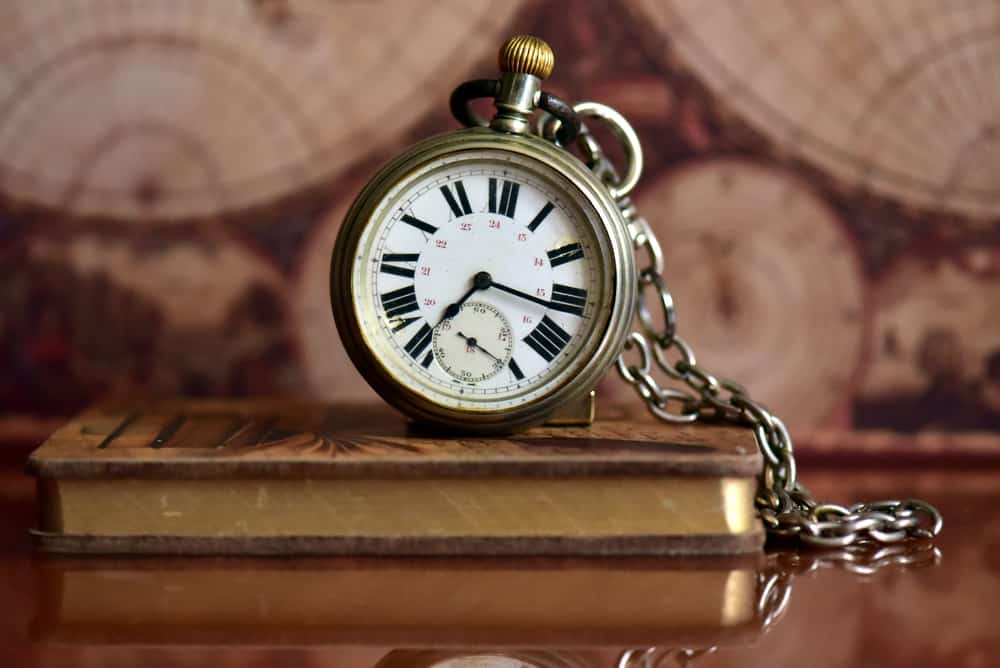Do you love the antique pocket watch that you recently inherited but don’t know how to identify it? If so, then this article is for you! Antique pocket watch identification can be a tricky business, but there are some surefire ways to get started.
Table of Contents
History of Vintage Pocket Watches
Pocket watches have been around for centuries, with the first ones appearing in the 1500s. These early watches were very rudimentary, and they didn’t gain widespread popularity until the 1700s. It was during this time that pocket watches became more accurate and reliable, thanks to advances in watchmaking technology.
By the 1800s, pocket watches were commonly used by both men and women. They were often given as gifts, and they became increasingly popular as fashion accessories. It was during this time that many of the world’s most famous watch companies were founded, including Rolex, Omega, Hamilton, Waltham, Elgin, and Cartier, brand names that we still recognize today.
Pocket watches continued to be popular throughout the 19th and early 20th centuries. However, their popularity began to decline in the 1920s, when wrist watches became more fashionable. Today, pocket watches are enjoying a resurgence in popularity, thanks to their classic style and intricate designs.
Types of Pocket Watches
Pocket watches add a sort of dapper flair to a man’s apparel. One way to wear one is known as the classic method, where you put your pocket watch in your vest pocket, thread the chain through a buttonhole, and then place the end of the chair (the fob) into your vest pocket on the other side.
However, another way to wear it is with a shorter chain where the fob (a T-bar) attaches to the buttonhole instead of threading through it. How you wear your vintage pocket watch will really depend on your personal preference, apparel choices, and what type of pocket watch you own.
An antique watch can be found in a variety of styles and materials. The most common type is the gold pocket watch, with either gold or stainless steel gears. Old gold pocket watches often have unique features such as engraved patterns or special markings. Other less expensive types of antique pocket watches include those with a silver case or even those made from brass or nickel with a thin gold layer overtop.
The style of an antique pocket watch is often determined by its use. For example, many watches made before the 1890s were designed to be used as timepieces, such as railroad pocket watches, while those made after this time were often more ornate and decorative.
As far as the design of pocket watches goes, there are five main types: Open-Face, Full Hunter, Half Hunter, Double Hunter, and the Double Half Hunter.
Open-Face
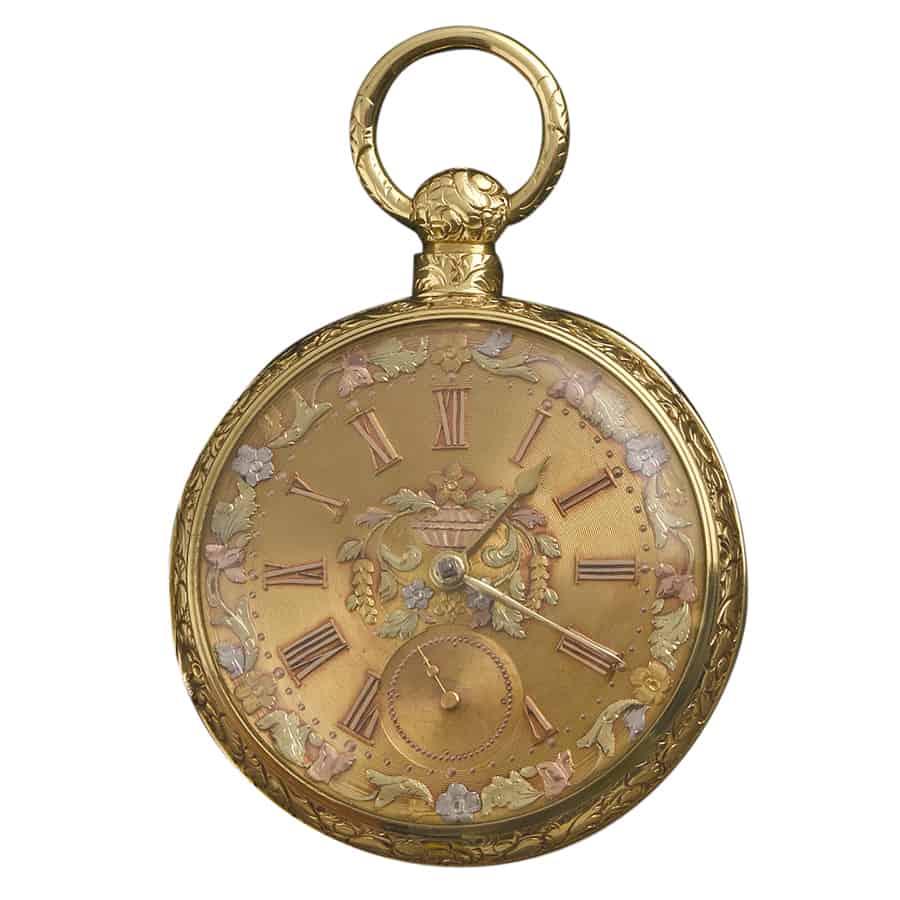
One of the oldest designs of watches, the Open-Face watches have the face exposed rather than concealed within a case. These were the types of watches used by railway workers in the 1880s in order to keep the schedules on time across railway networks. The design was also popular among men of high society during the same time period.
Full Hunter
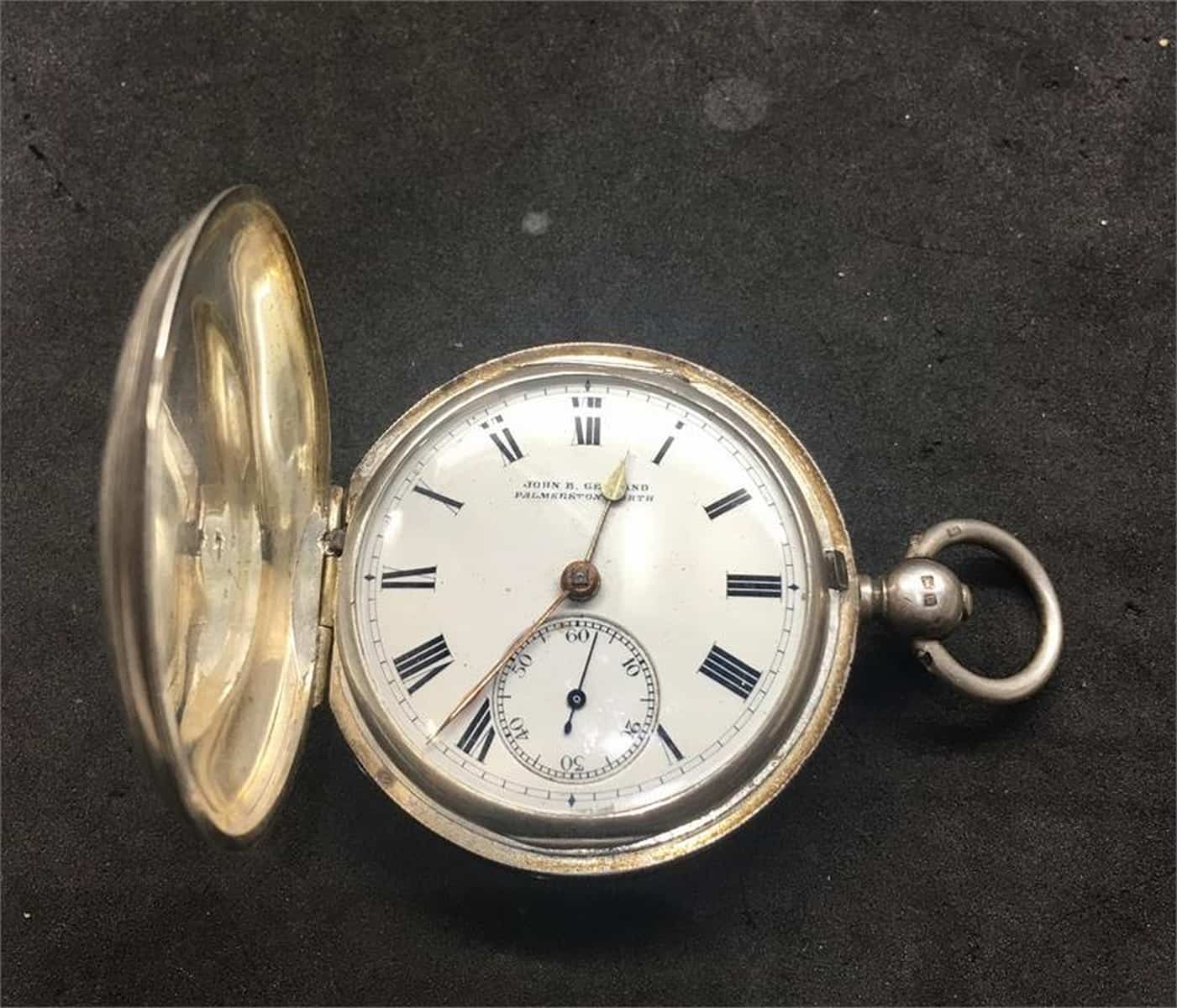
Full Hunter pocket watches have a metal cover over the entire face which can be opened to view the time. These were popular among those who worked outdoors, as they protected the face, so manufacturers began to embellish the cases with engravings and inscriptions.
Half Hunter
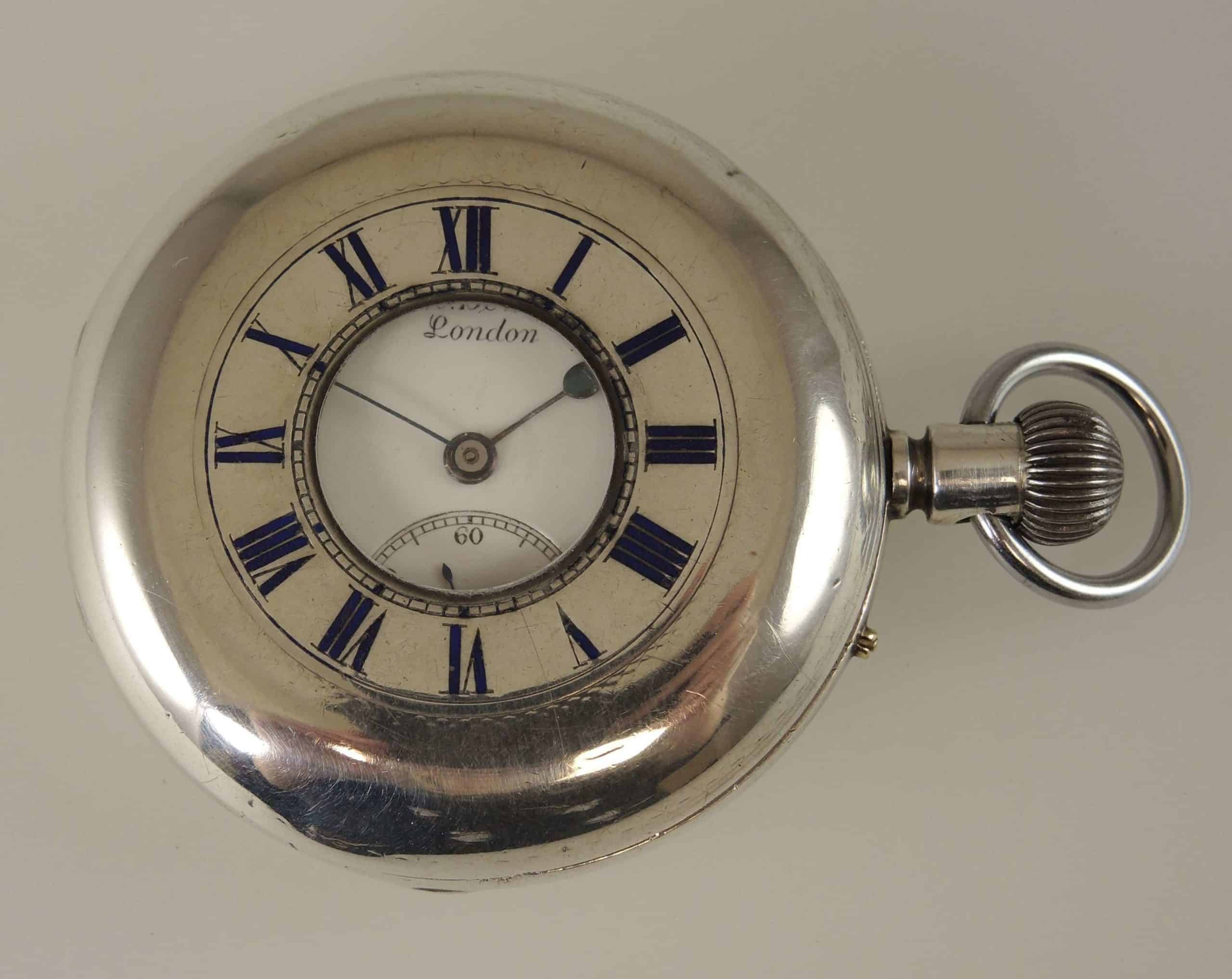
The Half Hunter watch is similar to the Full Hunter in that its hinged case protects the dial of the watch, however, there is a window in the case to view the hands on the face, allowing the user to see the time. Oftentimes, the case will also have numerals around the window for easier time reading.
Double Hunter
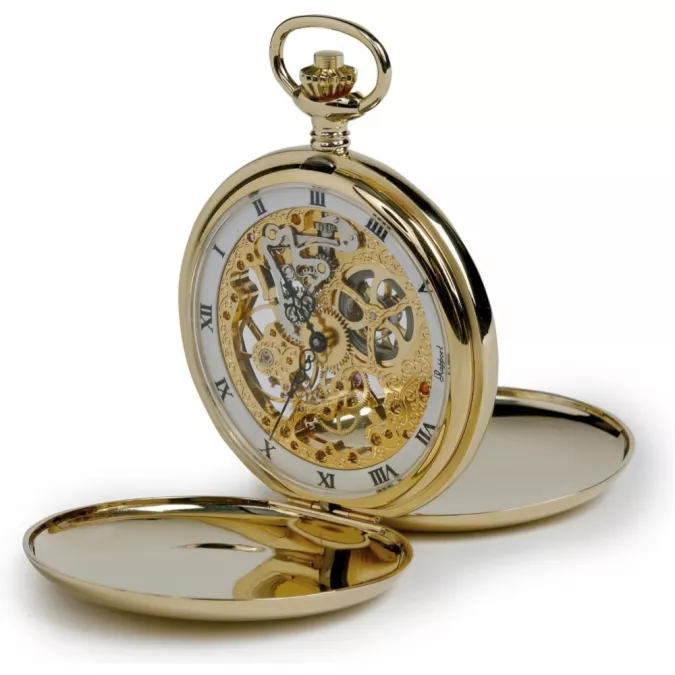
A pocket watch design that is growing in popularity is the Double Hunter, which exposes the mechanical watch movement through a skeleton dial in the front and through a large viewing window on the back, beneath a second cover. This type of watch is perfect for those who want to show off their timepiece and impress others with the intricate workings of a mechanical watch.
Double Half Hunter
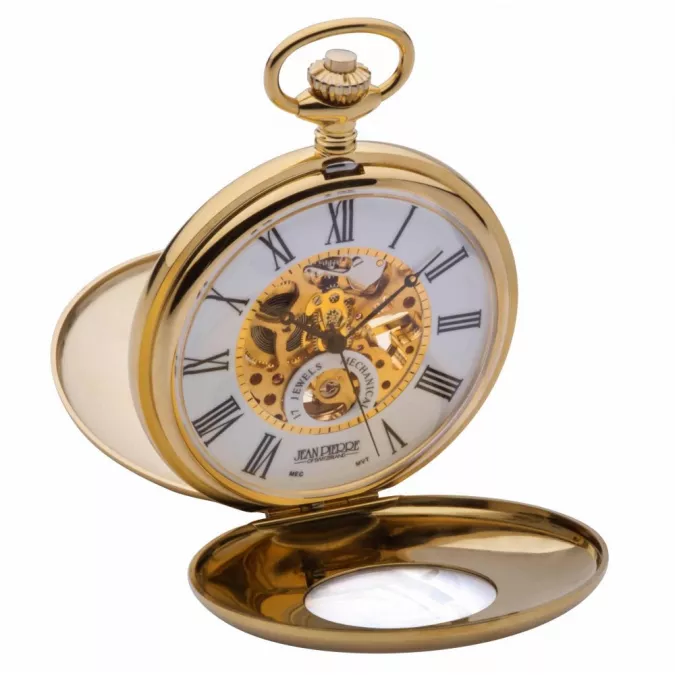
And lastly, the Double Half Hunter is very similar to the Double Hunter except that it has a viewing window on the front and sometimes one on the back case, too.
How to Do Antique Pocket Watch Identification?
Once you know what type of watch you own, you’ll want to try to identify it.
Serial number
If it’s an American-made watch, a great way is to check to see if it has a serial number. You will likely find the serial number on the movement and on the watch case. If you find it, it can give you a good indication of when the vintage watch was made and also who made it.
Hallmarks
If it’s a British-manufactured watch case, then there will be hallmarks on the back. Typically, the four components of a British hallmark include the maker’s mark, the standard mark, the assay office mark, and a letter to symbolize the year’s date. In other words, the hallmark should tell you who, what, where, and when.
Many professional watch companies have been in business for centuries, so there’s a good chance you can find information on the company online. You can also search the Pocket Watch Database or the PM Time Service tables in order to identify your pocket watch further.
Observing the movement inside
One of the most interesting ways to tell if your pocket watch is an antique is by observing the movement inside. Antique watches often have unique movements that can help you identify the watch.
For example, early pocket watches the key-wind style, where you needed a special key to wind the watch, was used from the 1600s through the mid-1800s. Then came the stem-wind watch, wound and set by a stem and a winding crown instead of a key, commercialized in 1850.
There are also other ways to tell if your pocket watch is indeed an antique. As I mentioned above, identifying the serial number and the clock’s maker will give you a very good idea of how old your watch is.
Identifying the Value of a Pocket Watch
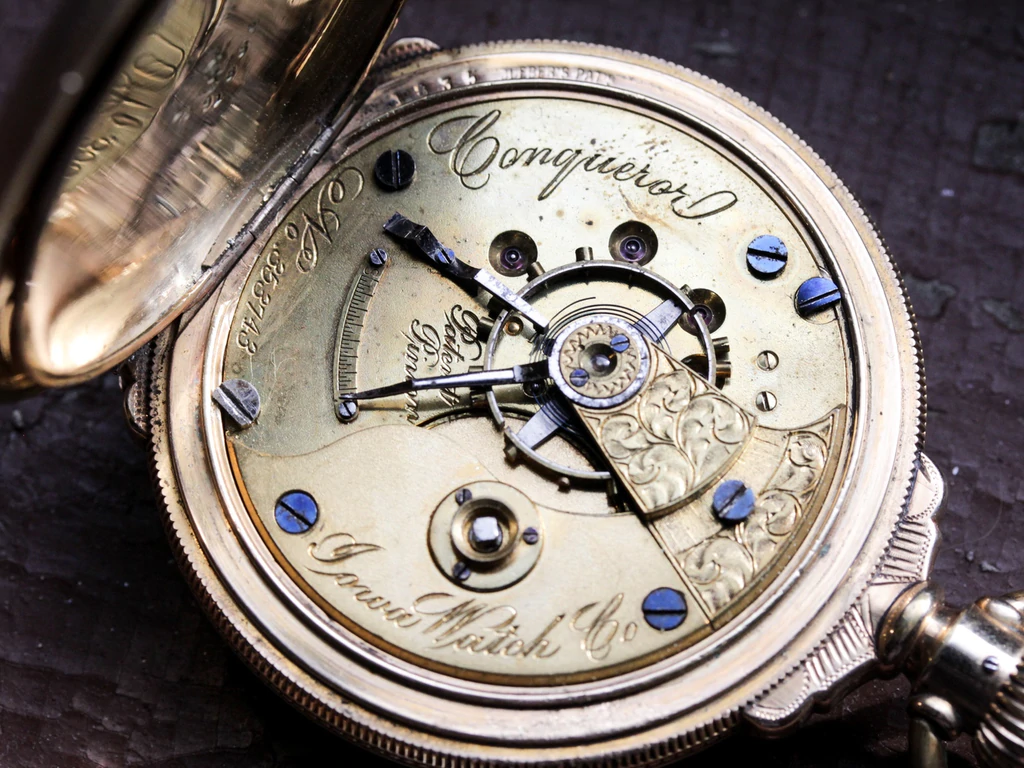
Instead of immediately hopping onto Ebay to find a buyer for your pocket watch, if you suspect that your watch is either quite old or quite unique, understanding the watch’s valuation first would be a wise idea.
One part of the watch to consider is the glass crystal, which is the clear lens that protects the hands, dial, and movement of the watch. If the crystal has been replaced with acrylic, which wasn’t invented until the 1920’s, then your watch may not be as valuable as you imagine.
Next, examine the watch’s case. As I mentioned earlier, antique watches are sometimes made with a case material of gold, silver, or other precious metals, so the quality of the metal can be an indicator of the watch’s value.
Another excellent way to identify a watch’s value is in the number of jewels incorporated into the piece. Jewels are simply extremely small rubies embedded in the pivots and other parts of watch movements in order to minimize friction. The number of jewels increased over time as watchmakers became more skilled, and the most prized watches have 15 or more jewels.
And of course, if you’re having trouble finding information or deciphering what you’ve found, you can always contact a watch expert or a pocket watch association for help.
How to Care for Antique Pocket Watches?
In order to keep your antique pocket watch cared for, you should keep in mind a few easy tips.
Your pocket watch is an heirloom, so you want to treat it with care. This means being mindful of storing it in pockets or pouches where it won’t be scratched or damaged by other objects.
You’ll also want to keep them from being submerged in water, as this can damage the watch.
When cleaning an antique pocket watch, use a soft, dry microfiber cloth to avoid scratching the surface. However, if you need to clean silver or gold case, or if you find that the movement itself needs cleaning, then the best thing to do is take your pocket watch to a professional watchmaker, who can properly clean those pieces without causing harm.
Antique pocket watches are delicate and should be handled with care.
Conclusion
Now that you know a little bit more about old pocket watches, you can dig into the history of the one you own. Or you can even start your search for the perfect timepiece to add to your collection.
Antique pocket watch identification can be tricky, but with a little patience and effort, you’re sure to find the
I hope this article has helped you in your quest to learn more about antique pocket watches. If you have any additional questions, please feel free to reach out in the comments below.
Thanks, and happy antique pocket watch hunting!
